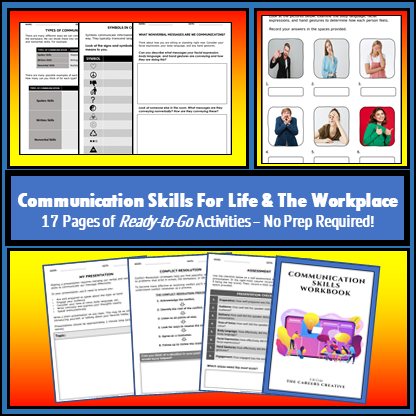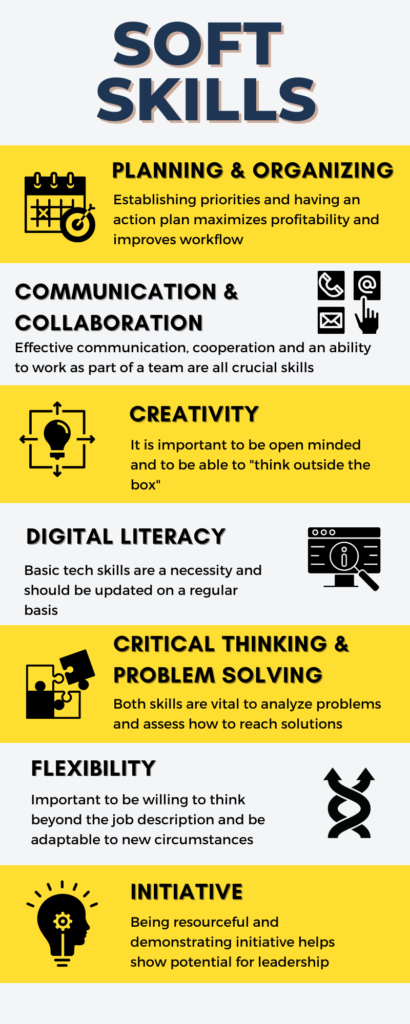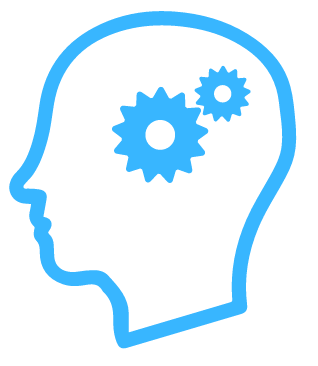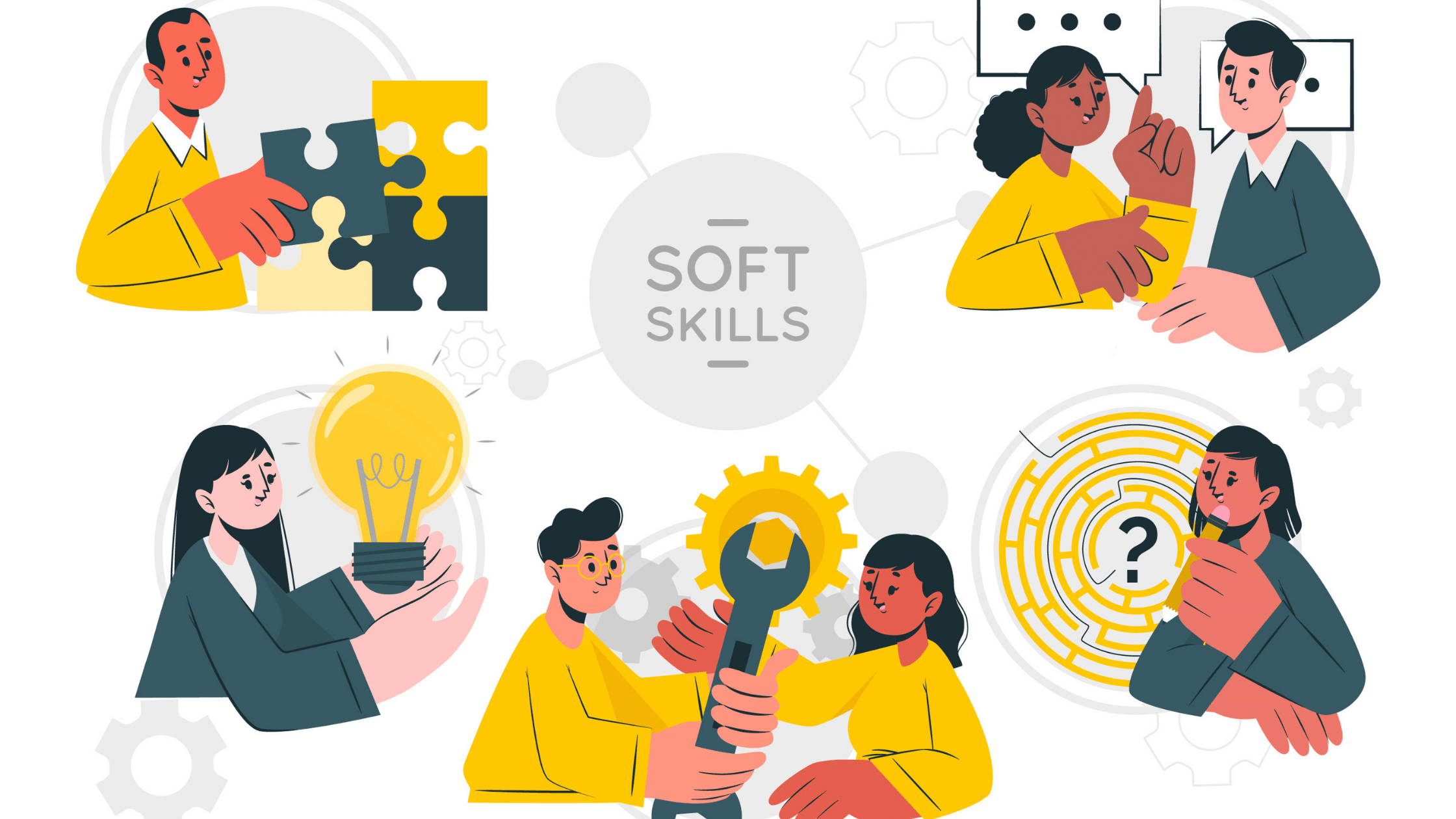What Are Soft Skills?
Sometimes referred to as enterprise skills, soft skills are transferable skills useful in almost any job or career.
Soft skills are often defined by contrasting them with what is typically referred to as ‘Hard Skills.’
Hard skills are the job-specific technical skills required to perform a particular job. These skills change from job to job.
For example, the hard skills a mechanic will use in performing their day-to-day tasks will differ markedly from those a graphic designer might employ.
On the other hand, soft skills are a combination of interpersonal and thinking skills that are useful in almost any occupation. They relate to how you interact with others, solve problems, and generally manage your responsibilities.
For example, while there is a vast difference in the hard skills required between a mechanic and a graphic designer, both must communicate with clients, solve problems using critical thinking, etc.
The soft skills we will explore in this article are:
- Planning and Organizing
- Communication
- Collaboration
- Creativity
- Digital Literacy
- Critical Thinking & Problem Solving
- Flexibility
- Initiative and Enterprise
Soft Skills For Life & The Workplace – Verbal & Nonverbal Communication

An engaging exploration of this highly-valued soft skill. This PDF workbook consists of a series of worksheets offering valuable practice at a wide range of communication skills essential for life and career.
Students will learn about and develop their communication skills through fun, engaging activities. Areas covered include:
- The different types of communication: verbal & nonverbal
- Using body language, facial expressions, and gestures
- Oral and written communication
- Making a presentation
- Symbols and their meanings
- Conflict resolution
Activities are carefully designed to work well as individual, small group, or whole-class activities, so they’ll work well in the classroom, homeschool, or even as remote learning activities.
All activities are ready-to-go, and NO PREP is required.
Why Is It Important for Our Students to Develop Soft Skills?
While the breadth of the various soft skills is exceptionally far-reaching, fortunately, with experience, effort, and practice, students can hone their abilities in these critical areas.
There are many reasons our students must develop their soft skills. Not least of these is the fact that due to the exponential growth of technology, it is impossible to predict what form the future job market will take.
What can be predicted with some degree of certainty is that those with well-developed transferable soft skills will be best placed to carve a role for themselves in this emerging world of work.
For example, people with strong soft skills tend to be much more adaptable. This makes them highly versatile, allowing them to take advantage of new opportunities more rigid people may not have the flexibility to pursue. This ability to adapt to changing and unforeseen circumstances is vital in these most uncertain of times.
Those with a broad range of highly-developed soft skills are frequently chosen for leadership positions. Strong situational awareness, high emotional intelligence, and solid communications abilities are all hallmarks of superior soft skills, those who excel in these areas are well-suited to managing others.
The Top Soft Skills
1. Planning and Organizing Skills
Planning and organizing are all about working out what you need to do and deciding how you will get it done. Good planning and organisation skills improve workflow and help save employers money, time, and effort by maximising productivity and profitability – it’s no wonder these skills are so highly-prized!
In the context of everyday life, planning and organizing could take the shape of planning and preparing for the day ahead. What time should they get up? What will they eat and when? How will they travel to school or work? When will they fit in their homework, exercise, family commitments?
In a workplace context, planning and organizing skills might display themselves through establishing systematic processes to complete tasks, delegation, developing timelines, scheduling, managing resources, etc.
People with good planning and organizational skills typically demonstrate an aptitude for time management, goal-setting, and high productivity levels.
Good planners and effective organizers can identify the tasks that need doing, prioritize them, delegate and schedule as necessary before completing them on time. This is usually best achieved through the creation of systematic processes that are suited to the individual’s personality and working style.
Planning and Organizing Practice Activities
- Develop a schedule for their daily activities, from rising in the morning to going to bed at night. This can be a great way to encourage their productivity.
- Involve the students in organizing an event. This could be a class or a whole school event.
- Encourage students to use a journal to plan their following day’s tasks. They can use their plan to see what they managed to get done and what they didn’t. Get them to do this for a period such as a week or a month, then discuss the impact of this activity at the end of that time.
2. Communication & Collaboration
Often under-rated, communication skills are frequently cited as some of the most in-demand skills sought after by employers.
Communication skills are those skills that enable us to send and receive information and are often a prime metric used for assessing an individual’s fit for a position.
Not only do written communication skills help students to land jobs through a well-written resume or an expertly-crafted cover letter, but written skills are also often a fundamental requirement of the job. Whether emailing clients or writing annual reports, writing skills are highly valued and useful in various contexts.
As with writing skills, technology has opened up a range of further possibilities for oral communication, including video conferencing, voice calls, and recorded messaging.
Though we often think of communication as taking either written or spoken forms, communication is about much more than verbal expression; it’s also about nonverbal communication involving facial expression, body language, hand gestures, and the ability to respond appropriately to cues in the environment.
As well as being able to express oneself skillfully, the adept communicator is an active listener. Without good listening skills, communication becomes a one-way street.
Increasingly, with the use of presentation tools such as Prezi and PowerPoint, and other visual tools, the ability to create, manipulate, and incorporate images into our messages is ever important.
Developed collaboration skills will enable students to work together with others to achieve a shared goal, such as presentations, for example. Collaboration is built on good communication, but it also requires each member of the team to accept responsibility for their team’s success or failure.
Requiring mutual respect and an ability to cooperate with others, collaboration is a key aspect of many jobs and is highly prized by employers as a result.
Communication & Collaboration Practice Activities
- Encourage students to join interest and activity groups that provide opportunities for them to meet like-minded people. This will help students grow in confidence by providing them with a conversation ‘bridge.’
- Institute a ‘Circle Time’ in the classroom where students sit in a circle and discuss various topics. There is a wide range of activities suited to this format that can easily be found by Googling search terms such as ‘Circle Time’ activities.
- Nothing beats practice. Make sure you make time for oral collaboration and presentation activities in the classroom to create further opportunities to practice these all-important communication skills.

3. Creativity
In a rapidly changing workplace, few skills can be of more value than the ability to think creatively.
We can understand this hard-to-pin-down skill as being the ability to approach a task or problem from a fresh perspective. Just as poets help us to see the world anew with the fresh eyes of a child, creative thinkers find new and interesting perspectives on their roles and responsibilities.
Avoiding well-worn ruts that lead to the same-old results, the creative thinker gathers their courage in both hands to forge new connections and uncover unique opportunities.
While obvious risks are involved with blazing new terrain in the workplace, creative thinking is essential for ongoing innovation.
Creativity Practice Activities
- One of the most effective ways to practice creative thinking with our students is to model creative thinking processes in the classroom. For example, by brainstorming ideas and solutions together and drawing mind maps, etc., we are modelling functional creative thinking processes that students can use later in other contexts.
- Encourage students to ask questions constantly. Not only is asking questions a great strategy for critical thinking, but it is also effective for generating original ideas too.
4. Digital Literacy
This soft skill doesn’t mean that all those entering the modern working world need to be proficient computer programmers. Digital literacy refers to possessing the basic skills needed to communicate and utilise a variety of technological tools to operate in the modern world.
Many of these tools are taken for granted by ‘digital natives’ born after 1980 who grew up in an age of ubiquitous technology. Few people of this or later generations are uncomfortable with using email, video-conferencing software, and applications such as Word, PowerPoint, Google docs, etc.
Digitally literate workers aren’t only comfortable communicating with colleagues via digital media, but they can competently employ the Internet to help uncover solutions to work-based problems.
Of course, there is a wide range of hardware tools (laptops, smartphones, tablets, etc) available to us and countless apps and other forms of software with new innovations emerging constantly. Certain jobs require familiarity with specific tools; therefore, the digitally literate worker must be prepared to update their skills constantly.
Digital Literacy Practice Activities
- You can’t fight progress! Get students using software and hardware tools to assist them in the completion of class and home-based work.
- Utilise the Internet as a research resource.
- Provide necessary guidance to help students navigate online spaces safely and critically assess resources and materials.
5. Critical Thinking and Problem-Solving
This powerful duo of critical soft skills empowers the worker to analyze the facts of a given situation and to process them effectively to arrive at a satisfactory solution.
The critical thinking process typically involves the gathering of information, asking insightful questions, and analyzing and assessing potential solutions.
Problem-solving skills help an individual determine the precise nature of the problem and choose the solution with the most optimal outcome.
Regardless of the job, there will be an accompanying job description. Regardless of the job description, there will be times when the employee will face an unforeseen difficulty, it is then that critical thinking and problem-solving skills come to the fore.
Critical Thinking Practice Activities
- Work to build in opportunities for students to find connections in their learning.
- Encourage students to make connections to real-life situations and identify patterns in the world around are great ways to practice critical thinking skills
- Offer students opportunities to complete verbal and mathematical reasoning problems in class and for homework.
- In your teaching:
- Use analogies to help explain abstract concepts
- Promote interactions and exchanges of ideas among students
- Ask open-ended questions
- Allow students time to reflect before answering
6. Flexibility
Flexibility is the ability to adjust to changing circumstances without warning. Change is inevitable, and not all of it can be foreseen. Those resistant to unstoppable change are like a rigid tree in a hurricane.
Workers who possess a high level of flexibility will survive the changes that a storm may bring without becoming debilitated by stress or anger.
The flexible worker is able to move beyond rigid adherence to the specifics of their job description to demonstrate a willingness to take on new tasks and responsibilities that may lie beyond their previous experiences.
While some people are naturally predisposed to being flexible, others will need to work on it. Like any skill on this list, flexibility can be developed and improved upon with practice. Flexibility is often expressed in the form of a Growth Mindset in contrast to the inflexibility of the Fixed Mindset.
Flexibility Practice Activities
- Assign various roles to students in group settings – for example, encourage shy/reluctant students to take on positions of responsibility within groups
- Change up classroom routines regularly
- Create opportunities for students to get out of their comfort zones both academically and socially
- Make changes to the learning environment.
7. Initiative and Enterprise
Possessing these skills guarantees a person’s usefulness in the workplace. Those who possess initiative and enterprise are never to be found twiddling their thumbs waiting to be told what to do. They identify what needs doing and get on with it. For example, between assigned tasks, the enterprising worker may begin to organise their workspace in a more efficient manner.
Identifying tasks that need doing increases a person’s productivity, shows enthusiasm, contributes to the success of a business and helps display the potential for leadership.
Initiative and Enterprise Practice Activities
- Give students positions of responsibility within the classroom
- Solicit student input during decision-making processes
- Incorporate open-ended projects into student learning experiences.
Developing soft skills is an ongoing process that students will engage in throughout their school and working lives.
While skills and abilities will develop naturally as students grow in their competencies and experiences, as with most things, conscious and reflective practice in these areas will reap the most fruitful results.
Author: Shane Mac Donnchaidh
Featured Image: Freepik

